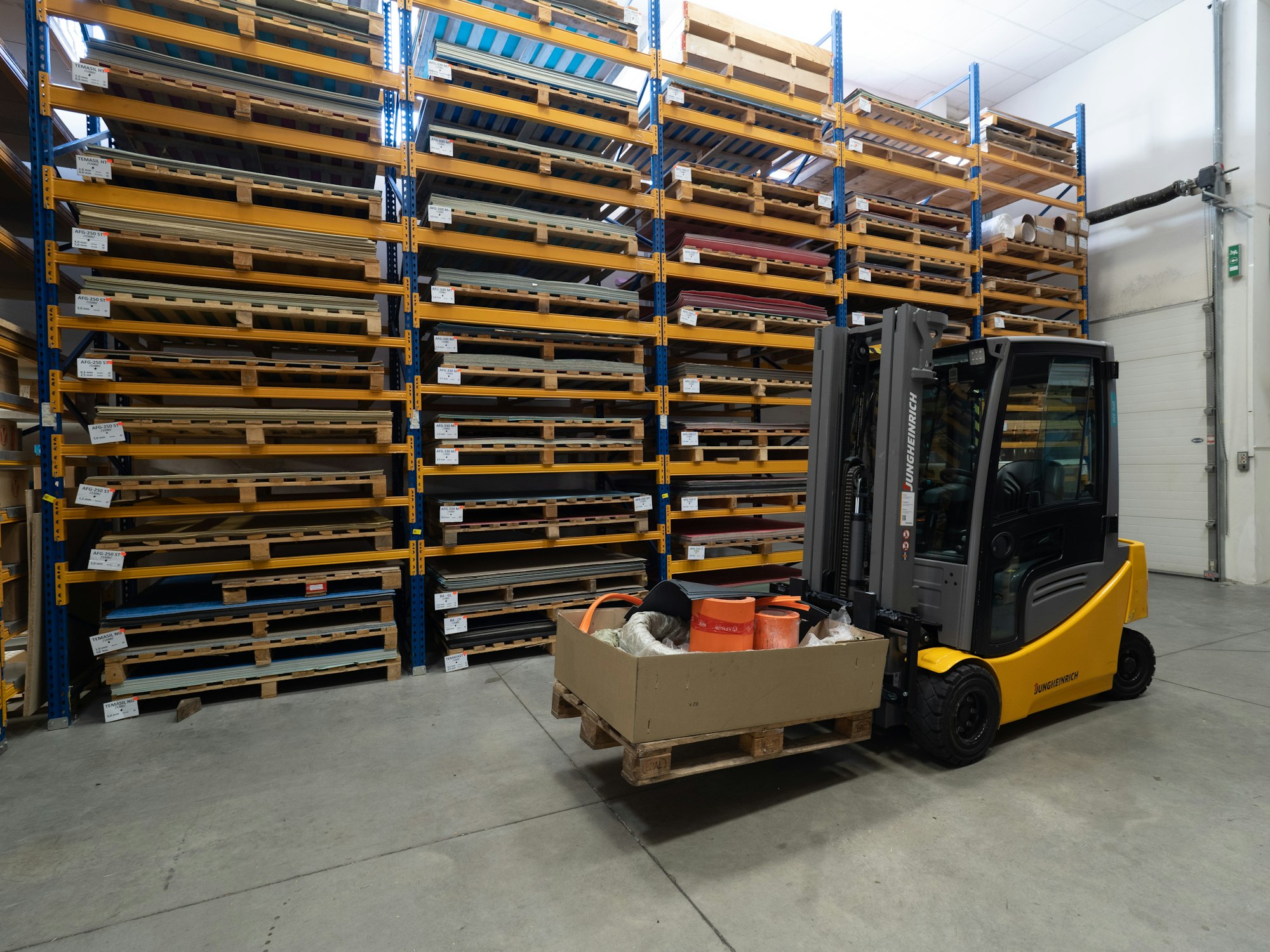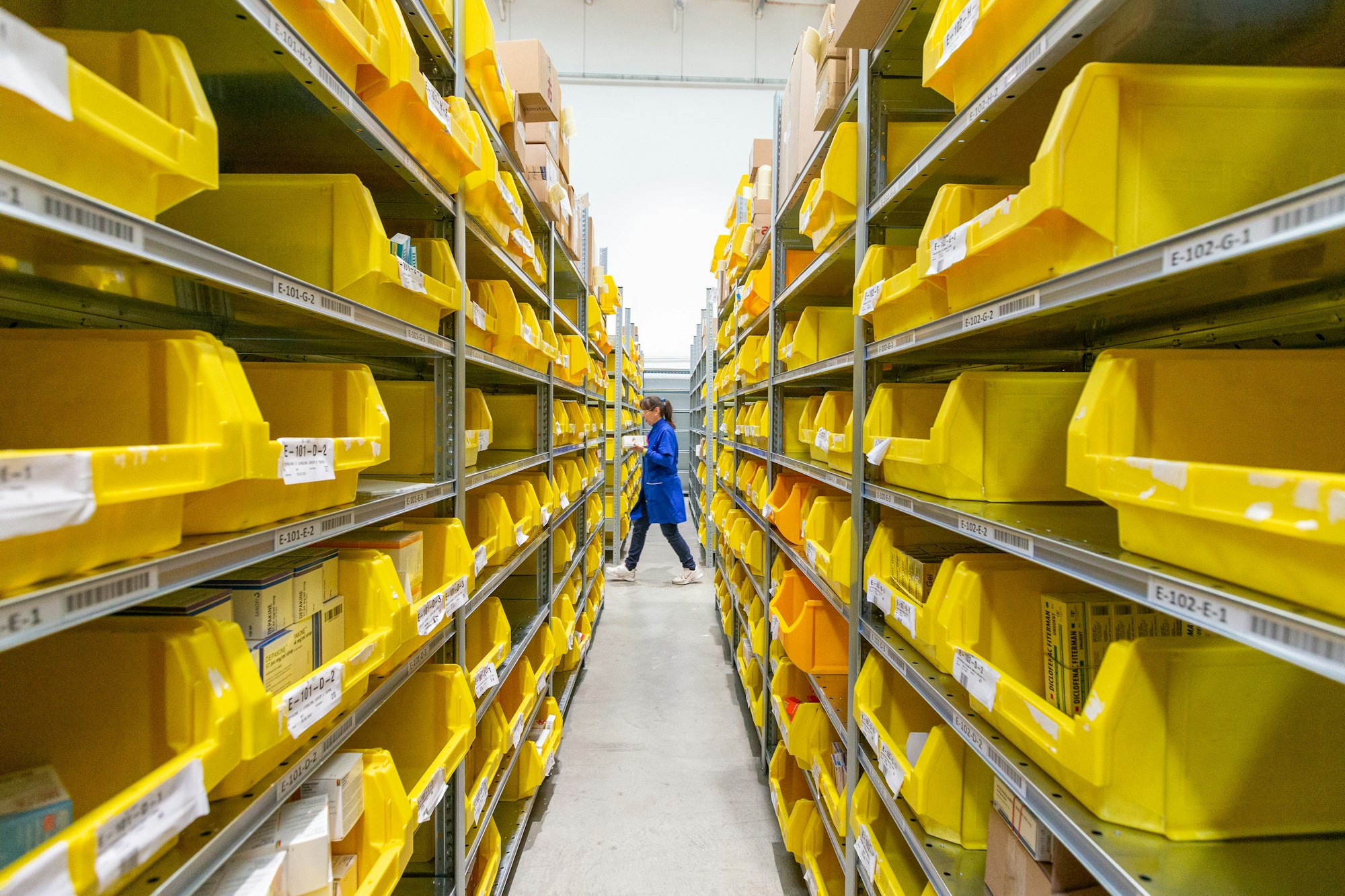Getting the 5 Pillars of the Order Fulfilment Workflow Right
We've all been there—the thrill of a successful online purchase and the disappointment when it goes south. No one wants their brand associated with the latter, especially when nearly half of consumers have bid farewell to companies due to a sour customer experience.
So, how can you set your eCommerce business apart? The key lies in the often-overlooked realm of order fulfilment.
Order fulfilment is the backbone of your eCommerce promise. Get it right, and you'll be riding the wave of satisfied customers. Get it wrong, and, well, you know the story.
This blog post is your ticket to understanding the heartbeat of successful order fulfilment—the five major pillars that make or break the post-purchase experience. We will guide you through these important functions and introduce you to alternative and modern shipping and fulfilment options that can revolutionise your strategy.
Get ready to transform your eCommerce game by mastering these pillars, serving customers with excellence, boosting sales, and watching your company's profits soar!

e-commerce-order-fulfilment">Perfecting Your E-Commerce Order Fulfilment
Think of order fulfilment as the moment of truth for your online store. It's not just about shipping a product—it's about keeping a promise. Quick and precise order fulfilment enhances your customers' perception of your business, while delays and inaccuracies do quite the opposite.
Creating a workflow plan for order fulfilment is like having a secret recipe. It not only streamlines the process for you, the store owner, but also ensures that each order is handled with efficiency and care.
Gone are the days of one-size-fits-all solutions. Every company has to tailor their order fulfilment approach to meet their specific order fulfilment needs.
You don't need an intricate blueprint, just a plan that covers the major bases of order fulfilment. The heart of the matter is the the five pillars that make up the order fulfilment process:
1. Receiving: From Makers to Merchants.
2. Inventory Storage: Warehouse Management.
3. Order Processing: From Click to Dispatch.
4. Shipping: From Warehouse to Doorstep.
5. Returns Processing: The Do-Over.
These five fundamental processes form the backbone of order fulfilment. In the following sections, we will take a closer look at each one of these pillars.
It's not rocket science, but it's the essence of delivering on your promises. Because mastering order fulfilment is not just about packages—it's about delivering satisfaction and turning one-time buyers into lifelong fans.

Pillar 1: The Receiving Process
Let's focus on the first pillar of the order fulfilment workflow—the receiving process.
This is where the journey begins for the items making their way to your doorstep.
It all begins with the arrival of inventory. This is the moment when merchants receive the goods they intend to sell, straight from the manufacturers or suppliers. This step sets the stage for everything to follow.
The Receiving Process is a meticulous five-step routine that ensures everything is in order before and order is received from a customer:
1. Counting Inventory
When the shipment arrives, a receiving clerk will start the inventory process by meticulously counting each unit to make sure they match the invoice. If there's a discrepancy—too few or too many—it's noted down, and a conversation with the supplier begins. Less than ordered? Maybe a future discount. More than ordered? The fulfilment centre sorts it out, ensuring fairness in the next round.
2. Inspect for Accuracy
Once the counting is done, it's time for accuracy. Each unit undergoes scrutiny to ensure it's the right item that was order from the supplier. If a mix-up is detected, a simple request to the supplier for a swap is made. To sweeten the deal, a discount might be on the cards—a little compensation for the inconvenience.
3. Inspect for Damage
Next up is the inspection for damage. Every unit gets a thorough check, and if some have wear-and-tear from the journey, a replacement order or discount request is swiftly dispatched to the supplier. It's all about making sure your goods arrive on the customer's doorstep in tip-top shape.
4. Adding Items To Inventory
Post-inspection, each unit gets its identity—an SKU code. This code notes down details about the items such as manufacturer and price. The SKU is what enables you to track the item's journey through the fulfilment process.
5. Apply Physical SKU Labels and Barcodes
Once the unit has its code, it's time for the final touch—a physical SKU label or barcode. With the label attached, the product is ready for storage. With this barcode, the unit is fully prepared to be ordered by a customer and to be shipped out.

Pillar 2: The Inventory Storage Process
As we dive deeper into the world of order fulfilment, our focus turns to the second pillar: The Inventory Storage Process.
Once the inventory is in, it's not scattered randomly. Instead, it's neatly indexed and stored away in a warehouse, ready to be bought by eager online shoppers. This is what ensures that a customer's order moves seamlessly from storage to packaging, ready to be delivered to their front door.
Here are some of the key elements that make up this important part of the order fulfilment workflow:
1. Strategic Storage: Placing Units for a Swift Retrieval
The inventory storage process is in essence a carefully choreographed cataloguing and organisational system that ensures that every unit is strategically placed within the storage facility. The goal? Swift and accurate retrieval when an order is received. Each SKU finds its designated spot, neatly organised to save time and prevent employees from rummaging through a maze of items.
2. Overflow Management
A warehouse is usually divided into storage bins where individual SKUs are kept. But what happens when there's a surplus of inventory? Enter the overflow storage area, a space where extra items patiently wait for their turn. As items move out, these overflow areas are tapped into, keeping the storage floor uncluttered and efficient.
3. Hot SKUs
The "Hot SKUs" are the items that fly off the virtual shelves. Since they are the items that are most in demand, these Hot SKUs are stored closest to the packaging stations for easy access.
4. Reorganising SKUs by Popularity
SKUs can change in popularity. When certain items become hot sellers, the fulfilment centre isn't left in the dark. Tracking software keeps tabs on the popularity of all SKUs and will inform the fulfilment centre when it's time for a reorganisation. This storage reshuffling keeps the order fulfilment process running at maximum efficiency.

Pillar 3: The Processing of Orders
As we navigate the order fulfilment journey, our attention now turns to the third pillar: The Order Processing Phase.
The Order Processing Phase is the beating heart of order fulfilment that propels items from the virtual cart to the real-world shipping centre.
The moment a customer clicks the 'buy' button, the following steps spring into action, ensuring that the order is made ready to hit the road:
1. Seamless Integration: When Clicks Trigger Action
To kick off the order processing phase, the secret lies in integration. By integrating order fulfilment software with the business' shopping cart, the process becomes a seamless, automated workflow. Your order is whisked away to the fulfilment centre as soon as you hit 'place order,' setting the stage for the picking and packing steps.
2. Picking
Enter the "picking" phase—the stage where fulfilment centre employees physically retrieve your items. In smaller operations, it's akin to a targeted navigation to the right bin. In larger enterprises, it's a meticulously coordinated business operation involving equipment operators and support staff. The goal? Ensuring efficiency so your items make it from storage to the packaging area in record time.
3. Packing
With items in hand, it's time to pack. This is the meticulous art of preparing your unit for its journey. This involves considering fragility, weight, dimensions, and health hazards—key factors in packaging.
Fragile items are securely wrapped for protection, heavy ones are securely packaged for safe transport, and all items are packed for space efficiency, keeping shipping costs low.
It's the last-minute preparations before the order is ready for shipment.

Pillar 4: The Shipping Phase
As we delve into the order fulfilment process, our attention turns to the fourth pillar: The Shipping Phase.
The Shipping Phase marks the culmination of the order fulfilment process.It's the moment when your carefully picked and packed items are set to begin their shipping process to your eagerly awaiting doorstep.
Here are some of the critical factors that make up this phase of the order fulfilment workflow:
1. Efficient Transport: Choosing the Right Route
In the heart of the shipping centre, shipping managers take charge. Their mission? To determine the most efficient way to transport each unit to its ultimate destination.
For smaller sellers, it's as straightforward as calculating the right postage and dispatching it through outgoing mail. But for others dealing with oversized units, bulk quantities, or items with unique handling needs, a different process is followed. Freight services or specialised couriers may be used in these cases, and it's the shipping specialists who will decide on the most effective and budget-friendly route.
2. Managing the Logistics
Shipping isn't just about postage. It's a coordinated logistics effort where every move matters. Whether it's coordinating with freight services or ensuring special handling for delicate items, shipping specialists play a crucial role in getting your goods from A to B in the most efficient and cost-effective manner.
3. Communication: Keeping Everyone in the Loop
Once the items are in transit, communication is key. The shipping centre takes the responsibility of updating you, the customer, and the order fulfilment software. It's the cue to mark your order as fulfilled. At this point, your items are officially on their way to you, unless, of course, a return occurs.

Pillar 5: Returns Processing
As we examine the components of the order fulfilment process, we arrive at the fifth and final pillar: Returns Processing.
Returns Processing is the last stage in the fulfilment process, acknowledging that sometimes, the journey takes unexpected turns.
Sometimes, plans change, and items are sent back. This is the returns processing stage. The system assesses the refund, and the returned items find their way back into the inventory, ready for another round of orders.
Here are some of the careful steps that are taken to manage returns and maintain a positive customer experience:
1. The Overlooked Role: Navigating Returns with Precision
Returned items are often overlooked or underestimated in the fulfilment process, but the fulfilment team must be prepared for when it happens. The internal process of returns handling mirrors the steps outlined above—counting, accuracy checks, damage inspections, and the careful reintegration into the order fulfilment software. It's a behind-the-scenes routine ensuring returned units are prepared for further processing.
2. Managing Customer Expectations
Beyond the warehouse walls, managing customer expectations is a key part of the returns process. Online merchants need to set a clear returns policy. These should come in the form of publicly accessible guidelines that are prominently displayed on their website, acting as a reference guide for customers. From where to send returns to the intricacies of refund and replacement policies, these guidelines ensure that everyone knows their part in the returns process.
3. Guiding the Customer Journey
Customers need to be in the know, and that's where clear communication plays its part. A well-crafted returns policy not only guides customers on the practicalities but also sets the tone for a smooth process. From the return address to the steps involved, it's about ensuring that the customer journey, even in the event of a return, is as hassle-free as possible.

Different Shipping Options for Differently Sized Outfits
The e-commerce landscape is vast, and the way you handle shipments can vary based on the unique needs of your online venture.
There is no one-size-fits all approach when it comes to order fulfilment, and the choice of shipping you use will depend on the unique needs and scale of your business. You need to tailor your approach to align with your business goals and resources.
For small, straightforward e-commerce ventures, the simplicity of handling everything from home might be the perfect fit. Picture this: tracking, storing, picking, and packing inventory, all happening within the confines of your garage. With the convenience of postal services, this option suits those who want to keep it close to home.
On the flip side, larger or more intricate e-commerce businesses, or those seeking to streamline without becoming fulfilment experts themselves, have an alternative—outsourcing to professional order fulfilment services. These specialists are seasoned in the fulfilment process, offering a comprehensive solution that includes everything from storage to shipping.
Some businesses opt for a hybrid approach. They might manage certain aspects of fulfilment in-house while outsourcing specific functions to professionals. It's a flexible model that lets businesses tailor their approach to suit their unique needs and resources.
As environmental concerns take centre stage, some e-commerce companies are prioritising sustainable shipping options. From eco-friendly packaging materials to carbon-neutral shipping methods, these businesses are aligning with eco-conscious consumer expectations, contributing to a greener future.
Choose the fulfilment path that best suits your business, ensuring that each order is fulfilled with precision and aligns with the expectations of your valued customers.

Conclusion
In the world of supply chains and online shopping, order fulfilment is what ensures that customers always get their desired products without a hitch. It's a process that involves five major business functions working seamlessly to take goods from the hands of producers to the eager hands of consumers.
These five pillars bridge the gap between where products are made to where they are wanted. It's the customer's order that initiates this process, and fulfilling it swiftly and effectively marks the first step towards excellent customer service.
However, order fulfilment transcends mere order completion—it involves crafting a network and a method that enables a company to meet customer demands while keeping the overall delivered cost to a minimum.
It's not confined to logistics alone—it requires cross-functional implementation, collaborating seamlessly with key suppliers and customers.
Depending on your organisational resources and skills, you may lean towards outsourced or internal fulfilment. Outsourcing grants the luxury to divert your attention to other pivotal aspects, such as sales and production, especially if in-house resources are limited.
Conversely, in-house order fulfilment offers greater control, ensuring an optimal customer experience. If you find yourself between these opposing concerns, a hybrid model might be the sweet spot.
But whichever one you choose, there are cutting-edge software tools available that can automate processes, reducing manual efforts and minimising errors. It's like having a digital assistant that keeps everything running smoothly, ensuring efficiency at every step.
Are you ready to revolutionise your eCommerce journey? Embrace the optimal order fulfilment process and witness your business soar to new heights. Take charge of your success today!